How To Grow Pansies From Seeds (Sowing To Basic Care)
Pansies can be grown in both sun and shade, but they prefer partial shade to full sun in most climates. Choose a location with well-draining soil and plant the seeds or seedlings in pots for best results.
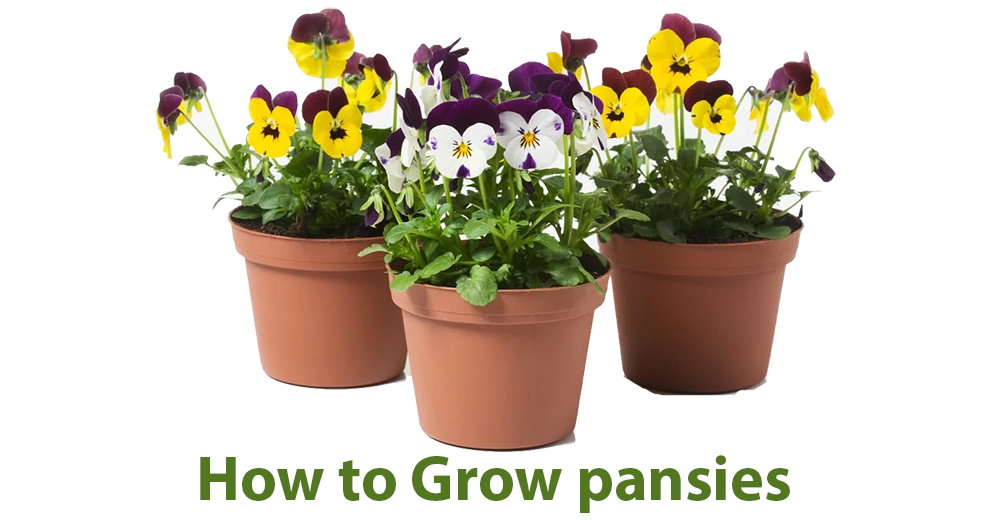
Growing pansies is typically easy, making them an excellent choice for experienced and novice gardeners. They prefer well-draining soil, rich in organic matter, and thrive best in full sun or partial shade.
However, you must first understand how to grow pansies to achieve blossoming and beautiful rewards. There are two methods of planting pansies – from seeds and buying seedlings from a store or local nursery.
The gist is, you must sow pansy seeds 1/8 inch deep and keep the soil moist until they germinate. After you see the seedlings sprouting a few sets of leaves, you can transplant them into the garden.
Alternatively, you can shorten the process by directly buying pansy seedlings from a garden center or nursery.
Pick healthy-looking seedlings with solid leaves and stems and plant them in well-prepared soil. Water thoroughly and keep them moist, not waterlogged.
Regardless of your chosen method, pansies need regular feeding and watering across the growing season.
As apparent, the drill is not hard. So, read below as we help you understand how to plant pansies in detail.
| Did you know?
Technically speaking all pansies are violas but not all violas are pansies. |
Are Pansies Easy To Grow?
Yes, pansies are considerably easy to grow, making them an excellent choice for new gardeners as well.
Typically, most pansy varieties thrive in well-draining soil, rich in organic matter, and can be grown in full sun or partial shade.
Pansies Flower Information
| Sunlight needed | Full or partial sun exposure. |
| Soil | Well-draining soil with good organic matter content is ideal. |
| Water | Pansies require regular watering to keep the soil evenly moist. |
| Fertilizer | Applying a balanced flower fertilizer according to package instructions can promote healthy growth. |
| Bloom time | Spring, Summer, Fall |
| Flower color | White, yellow, purple, blue, red, pink |
How To Grow Pansies?
As already stated, growing pansies is not challenging, but if you ever get stuck, here is a detailed guide that will come in handy.
A. When To Plant Pansies – Choose the right time for planting them
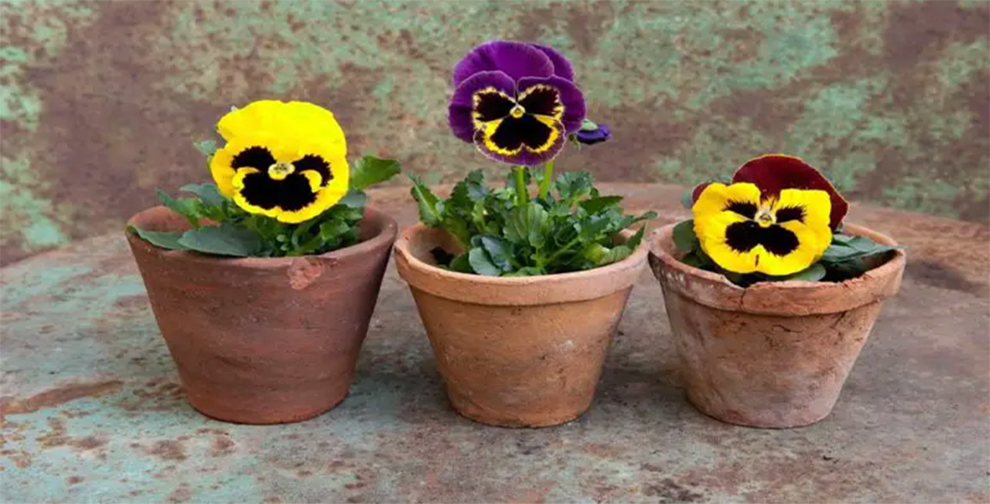
The precise time to plant pansies will depend on your climate and location. Generally, it is best to plant pansies when the soil temperature is between 45° and 65°F (7° to 18°C). It usually occurs in the fall or early spring.
People who reside in colder regions shall not worry about light frosts, as pansies can well endure them. However, do not plant them when the night temperature is consistently below freezing.
If thinking about how to start pansy seeds in spring, you must wait until the ground has dried or thawed to work the soil. In the fall, aim to plant pansies about 6 to 8 weeks before the first expected frost.
It gives the plants ample time to establish their root system before the colder temperatures set.
Further, please note that pansies thrive in cooler temperatures and usually struggle in the hot summer weather. In regions with hot summers, you must plant the pansies in the fall so they can mature and bloom before the heat arrives.
Overall, the planting time depends on your local time. Hence, you must consult your local gardening center or extension office for recommendations.
B. Select a suitable location for pansies
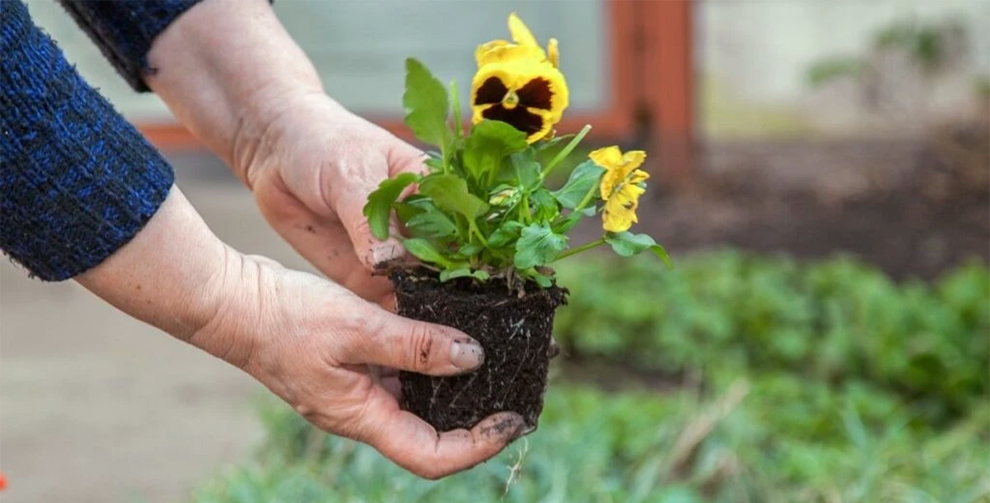
You can grow pansies in full sun and shade, but they perform best in partial shade to full sun.
In hot weather conditions, pansies benefit from afternoon shade, which guards them against the intense heat and prevents their flowers from fading. In cooler temperatures, they can endure more sun exposure.
When picking a location for planting pansies, look for a spot with well-draining soil rich in organic matter.
Do not plant your pansies where it is prone to standing water, as this may result in root rot and other diseases.
If planning to plant them in a container, you must be well-acquainted with how to plant pansies in a pot. Ideally, the chosen container must be 6” in size and have drainage holes to let the excess water seep out.
C. Prepare the soil for pansies
Before planting pansies, you need to prep the soil to ensure that they have the best chance to grow well. Here are some tips to prepare the soil:
1. Clear the planting site: Remove the rocks, weeds, or other debris from the planting site. Use a hoe or rake to loosen the soil to a depth of six to eight inches.
2. Add compost: Pansies thrive in rich soil with organic matter. So, adding compost to the planting area can help better the soil fertility. Spread a layer of compost on the planting area and work it into the soil with a rake or shovel.
3. Add a fertilizer: If your soil is poor, consider adding balanced plant food, such as the 10-10-10 or 14-14-14 formula. Always follow the packaging instructions for how much to apply and how to work it into the soil.
4. Level the soil: After adding fertilizer and compost, use a rake and level the soil to form a smooth surface for planting.
How To Grow Pansy Flowers (Planting Process)
After the soil is ready, you can follow the below mentioned steps:
- Dig a hole twice as wide as the root ball and deep enough, ensuring the plant’s crown is at level with the ground.
- Remove the pansy plant from its container and gently loosen the tangled roots.
- Place the plant in the hole and backfill it with soil, tamping it down lightly to eliminate any air pockets.
- Space the plants 6 to 12 inches apart for better circulation. Water lightly and mulch the area.
If you are using seeds to grow pansies, here’s what you need to do:
1. Start the seeds in a tray or pot: Start by filling a seed tray or small pots with a good quality seed-starting mix. Make sure the container has drainage holes to prevent waterlogging.
2. Sowing pansy seeds: Sprinkle the pansy seeds evenly over the soil surface. Pansy seeds are tiny, so be cautious not to sow them too thickly. A light dusting of the seed-starting mix can be gently sprinkled over the seeds to lightly cover them.
3. Further care: Lightly water the tray to keep the soil moist. Keep the tray or pot in a location with 60° – 70° F temperature and wait for it to germinate. Once you see the seedlings, transfer the healthy ones to a permanent location.
How Far Apart To Plant Pansies?
When planting pansies, you must be cautious to give them ample space to grow and spread out. Ideally, the recommended spacing depends on the plant’s size and variety, but generally, they must be about six to 12 inches apart.
If your pansies have small blooms, they can be spaced closer together, while those with larger flowers should be spaced further apart.
You can also adjust the spacing based on your preferences and the overall look you want to achieve in your garden or container.
You must know how to sow pansy seeds with proper spacing as it is vital to ensure good air circulation around the plants. This can help prevent diseases and promote healthy growth.
It also gives the plants enough room to develop a solid root system and access essential nutrients and moisture in the soil.
How Often Should Pansies Be Watered?
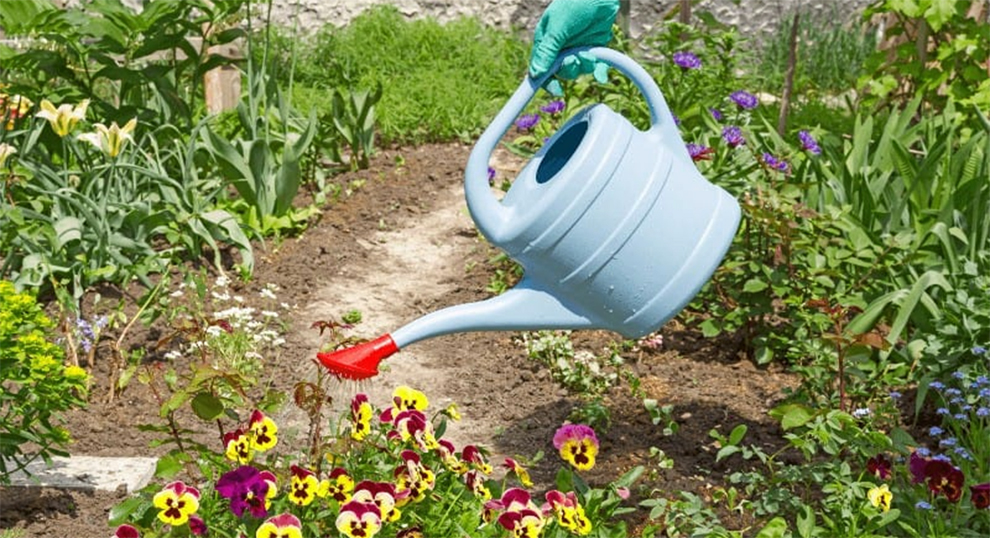
Pansies cherish regular watering to thrive. Thus, it is vital to avoid overwatering them. The soil must be kept soil but not waterlogged, as this can result in root rot and other diseases.
Generally, water pansies once a week or more frequently if the weather is dry and hot. While watering, try to avoid getting the water at the leaves. It can amplify the risk of fungal diseases.
If you do not know whether your pansies need water, it is best to inspect the soil moisture by sticking a finger about an inch deep into the soil. If the topsoil feels dry, you can water it again.
Do Pansies Need To Be Covered By Mulch?
Mulching is a crucial step toward pansies care. It helps retain the moisture in the soil, suppress weeds, and regulate the soil temperature. It also helps guard the roots from extreme cold and heat.
After planting the pansies, apply a thick mulch layer around the plants, not covering the plant’s base or crown. You must employ a mulch material that is lightweight and organic, such as pine needles, straw, or shredded leaves.
Do not use heavy mulches like wood chips, as they suffocate the plant.
Apply the mulch to the plant’s depth of around 2 to 3 inches, ensuring you do not bury the plants’ stems. Replenish the mulch periodically to maintain proper depth and ensure the plant continues to get the desired benefits.
Further, please keep the mulch several inches away from the plant’s stems to prevent the moisture from accumulating and causing root rot or other diseases.
What Is The Best Fertilizer For Pansies?
Knowing when, which, and how much feeding your plant needs is crucial once you know how to plant pansies.
You must fertilize your pansies when planting them and then every four to six weeks across the growing season. Use a balanced fertilizer for pansies, such as a 10-10-10 or 20-20-20 blend, and apply it according to the manufacturer’s instructions.
To fertilize, sprinkle the plant food evenly over the soil around the plants cautiously, ensuring you do not get it on the flowers or foliage. Water the plants evenly after feeding.
It helps the nutrients penetrate into the soil. Beyond regular feeding, you must also use organic methods to better soil health and give nutrients to the pansies.
Composting and using organic amendments like bone meal, blood meal, or fish emulsion can all help to nourish your pansies naturally. Follow the instructions carefully, as over-fertilizing can lead to problems like burned roots or foliage.
Related: How long do pansies last?
How Do You Maintain Pansies?
Regular maintenance is imperative to ensure your pansies continue to look their best. Here are some tips to follow once you have learned how to plant pansy seeds:
1. Deadheading: To encourage continued blooming, deadhead the spent blooms regularly. It involves removing the spent flowers by cutting off or pinching off the stem above the flower’s base.
It helps the plant direct its energy toward producing new flowers instead of focusing on seed production.
2. Winter care: Pansies can survive in winter but may suffer from damage by frost heaving. To avoid this, it helps to cover the pansies with a mulch layer or pine straw once the ground freezes.
In milder climates, pansies continue to bloom across the season with proper care and overwinter with some protection.
3. Pest and Diseases:Pansies are pretty hardy and resistant to pests and diseases but can be susceptible to some issues. Common pests that attack pansies include aphids, slugs, and snails.
As for diseases, pansies can suffer from fungal illnesses, such as powdery mildew and downy mildew.
To avoid this or treat these issues, you must space the plants and water from the base instead of overhead watering and eliminate any infected plant material instantly.
What Temperature Will Kill Pansies?
Pansies are typically hardy plants, but they endure some frost and cold. But, extremely low temperatures can kill or damage pansies.
Generally, pansies can endure temperatures as low as 25-30°F (-3 to -1°C) for short periods of time. But prolonged exposure to temperatures below freezing may damage the plant, the foliage, and flowers.
If the temperature goes below 20°F (-7°C) or lower, pansies are more likely to be severely damaged or killed.
Further, container-grown pansies are typically more susceptible to damage from cold weather than those grown in the ground.
So, if you reside in areas with harsh temperatures, consider guarding your pansies with a thick mulch layer or veil them with a frost cloth during the coldest times.
How To Grow Pansies Indoors?
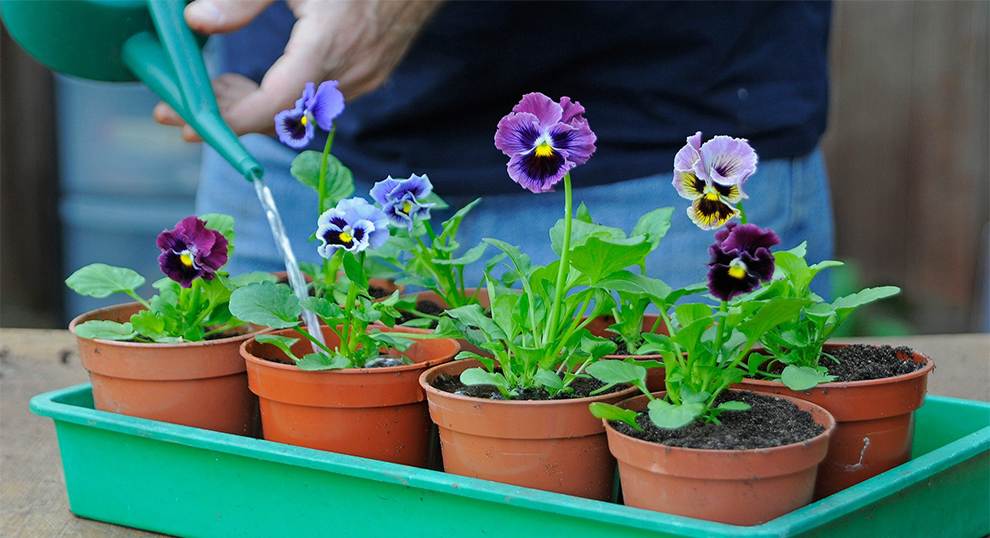
You can grow pansies indoors by following the steps below:
- Select a container or pot at least six inches in diameter with drainage holes. Fill it with a well-draining potting mix.
- Sow the pansy seeds on the soil surface and lightly cover them with a thin soil layer.
- Mist the soil to keep it moist.
- Move the container to a well-lit, warm area with six hours of sun daily. If natural light is missing, use grow lights.
- Water enough to keep the soil moist, not waterlogged.
- Once the seedling grows two to three inches tall, thin them so they are spaced about two inches apart
- Fertilize every 14 days with a balanced food to encourage healthy and fresh blooming.
- Deadhead the spent flowers regularly.
Is It Better To Plant Pansies In The Pot?
Yes, pansies can be an excellent selection for container or pot planting, especially if you like to add color to your porch, balcony, or patio or have limited space.
Before you think of how to plant pansies in the ground, know that pots are flexible. So, you can move the plant around per the changing weather conditions or display them in the best location for their size and colors.
However, potted pansies must be watered more frequently than those in the ground, as the containers dry out faster.
But you can control the soil moisture level better in the pot, which prevents root rot and other diseases.
Containers also give you an opportunity to employ a premium potting mix optimized for nutrition and drainage. Hence, planting in pots can be a great option.
